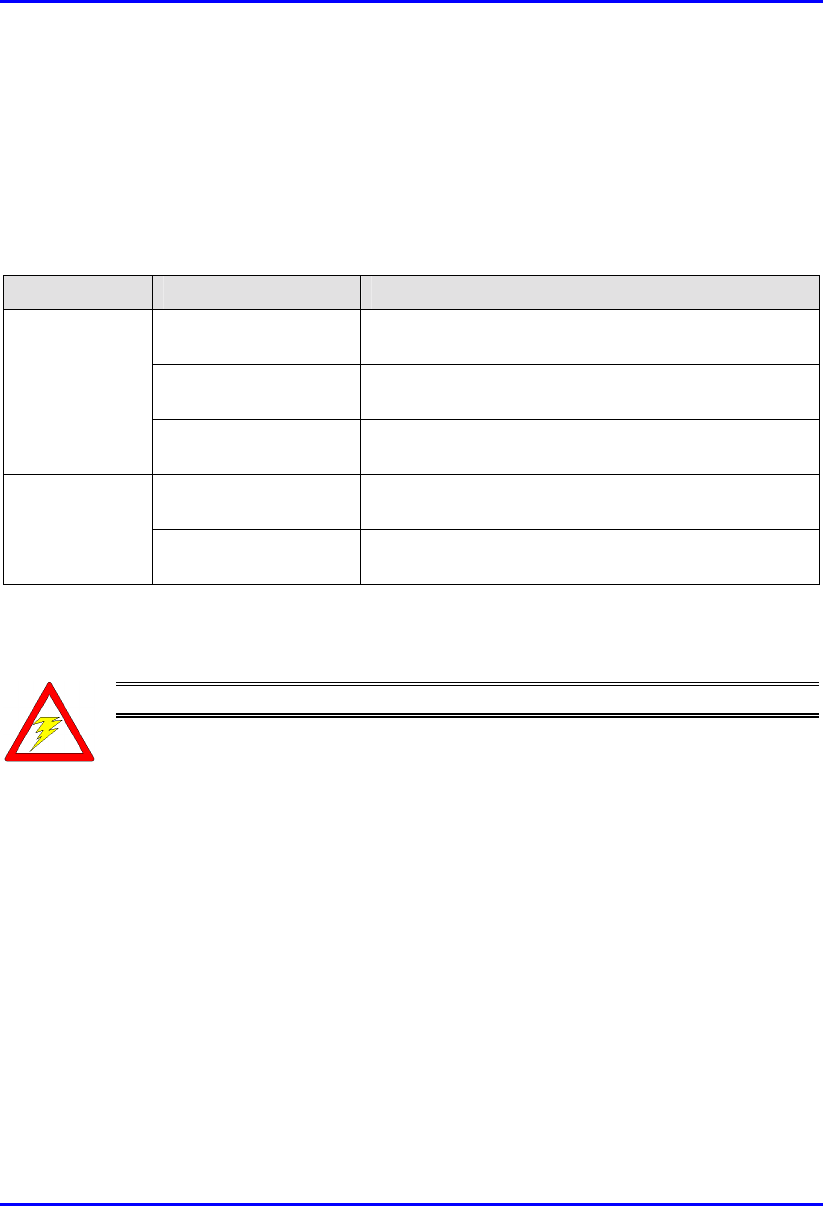User's Manual
Table Of Contents
- Hardware Installation Guide
- Contents
- About this Guide
- 1. Overview
- 2. Safety Guidelines
- 3. Package Contents
- 4. Required Tools
- 5. Radio Site Planning
- Part I: Base Station Installation
- Part II: CPE Installation - Subscriber Premises Radio (SPR)
- Part III: CPE Installation - Indoor Data Radio Indoor (IDR)
- A. Glossary
- B. Installing the BSPS
- B.1. Basic Design
- B.2. Physical Dimensions
- B.3. Electrical Site Requirements
- B.4. BSPS Cabinet Cabling
- B.5. Installation Summary
- B.6. BSPS Batteries
- B.7. Rectifiers
- B.8. Operating the System Controller
- B.9. Powering on BSPS
- B.10. Connecting BSPS Management Cables
- B.11. Cabinet Power Requirements
- B.12. Troubleshooting
- C. Cable Crimping
- D. Connector Pinouts for SPR with DB9
- E. Evaluating Link Quality
- F. Technical Specifications
- G. Third-Party External Antenna Specifications
- H. Declaration of Conformity

Safety Guidelines Hardware Installation Guide
2-6 Airspan Networks Inc. 02030311-07
2.2.2. Grounding
Only certain ASWipLL devices require additional grounding. ASWipLL devices
that do not require additional grounding have grounding at the main supply outlet.
The following table lists the ASWipLL devices’ grounding requirements.
Table 2-1: ASWipLL grounding requirements
Site ASWipLL device Grounding
BSR Through the mains (via BSDU) i.e. no additional
grounding required
BSDU Additional grounding required (grounding lug at rear
end of chassis)
Base Station
BSPS Additional grounding required (grounding lug at rear
end of chassis)
SPR Through the mains (via SDA), i.e. no additional
grounding required
CPE
IDR Through the mains, i.e. no additional grounding
required
2.2.3. Lightening Protection
Warning: Never install the equipment during stormy weather and lightening.
ASWipLL devices comply with the Surge Immunity standard: EN 61000-4-5.
ASWipLL devices are protected from lightening surges as the outdoor devices
(BSRs and SPRs) are encased in a plastic chassis. Therefore, if lightening strikes the
device, an electrical circuit cannot be completed, and hence, no electrical surge can
occur.
In addition, ASWipLL outdoor and indoor (SDA) devices provide high-speed data
line protection against direct and induced transient over-voltages surges on the
cables. This capability is provided by the fact that all ASWipLL devices are
designed with TVS (transient voltage suppressor) components that maintain
potential differences.










